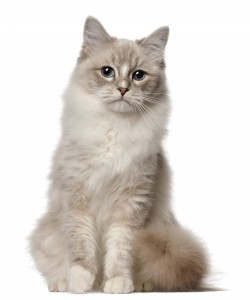Canine
There are five main diseases we vaccinate dogs against. These are Distemper, Hepatitis, Parvovirus, Parainfluenza and Bordetella.
Traditional Regime:
Puppies receive an initial course of three vaccinations; one each at 6, 12 and 16 weeks. Puppies on this regime are still at risk of contracting disease until two weeks after their final vaccination hence; full protection has not been achieved until week 18. After this, dogs will require an annual booster for all five diseases for the rest of their lives.
Modern Regime:
Puppies receive two lots of vaccinations at 6 and 10 weeks of age. Full immunity is attained at 11 weeks of age. A full C5 booster is still done at one year of age however following the first year; the three main diseases, Disptemper, Hepatitis and Parvovirus; only need to be re boosted every three years (rather than every year as with the old regime).
Our Philosophy:
We recommend the newer regime. We believe this to be better for two main reasons:
- Firstly, puppies have earlier protection against parvovirus in particular. This is still a common disease that is often fatal. The new regime affords maximum protection by 11 weeks of age. With the old regime, pups aren’t protected until 18 weeks of age; almost doubling the risk period.
- Secondly, after the first annual booster, we believe that only vaccinating as required is far healthier for our dogs than unnecessarily blanket vaccinating every year. Only Bordetella and Parainfluenza need to be repeated every year.
Why are less vaccines better? Although not proven, some vets, (ourselves included); have a belief that over vaccinating may potentially be responsible for adverse immune diseases later in life. However, whether proven or not, what we do know is that there is absolutely no advantage in over vaccinating and therefore, we do not recommend it if there is no advantage but rather a potential disadvantage. We certainly don’t use the old regime for our own pets hence we don’t recommend it for yours.
Feline
There are three core diseases with vaccines that are recommended for every cat. These are Feline Parvovirus (or panleucopenia virus) – which causes severe gastroenteritis and immune suppression; and two diseases which cause Cat Flu type symptoms; Feline Calicivirus and Feline Herpesvirus-1.
Traditional Regime:
The traditional kitten vaccination series is three F3 vaccinations at 8, 12 and 16 weeks, and then boosters annually. Older cats or cats with unknown vaccination history would receive two vaccinations four weeks apart and then annual booster injections.
Modern Regime:
We now use modern vaccinations that require fewer injections. For kittens there is an initial vaccination at 8-9 weeks of age and then a single booster at 12 weeks of age. There is no need for a third kitten vaccination like in the old regime. For older cats, or cats with unknown vaccination status, we give an initial vaccination and then a booster 4 weeks later.
The big difference for annual boosters with our vaccination regime is that the Parvovirus component only needs to be given every 3 years. We firmly believe fewer vaccinations are healthier and safer for your cat. After starting vaccinations with us, your cat just needs a booster for cat flu (called an F2 vaccination) for the next two years. The Parvovirus vaccination is then only given every third year as an F3 vaccination.
Unlike the old regime we can reduce the number of vaccinations your kitten needs initially, and also for the rest of its life. This newer vaccination allows your kitten to be fully vaccinated earlier and have good immunity to the highly contagious cat flu virus’s sooner.
FIV Vaccination:
Feline Immunodeficiency Virus (similar to the HIV virus in humans); causes an acquired immunodeficiency syndrome in cats. It is similar to HIV but is not transmissible to humans and not a health risk for people. Cats spread the disease to one another by transmission of bodily fluids – most commonly through fighting and biting.
There is a vaccine available for FIV in cats. We consider it to be a ‘non-core’ vaccine which means we don’t recommend it for every cat, but for those with lifestyle factors which put them at heightened risk such as outdoor cats who are known fighters, or cats that are living with other FIV infected cats. We recommend that adult cats are tested for the virus with a quick, in-house test before they are introduced to a household, or before they are vaccinated.
The FIV initial vaccination series is three injections three weeks apart, and then booster injections annually.
Feline Parvovirus/Panleukopenia:
There have been recent reports of an outbreak of Feline Parvovirus in Melbourne. This is a serious disease causing life threatening gastroenteritis and immune system depression in all cats – most commonly kitten and older cats or cats that are unwell with other disease. The symptoms usually require treatment on intravenous fluids in hospital, with antibiotics and other supportive care. Despite treatment, mortality can be more than 50%. The outbreak is thought to be related to the recent weather, and a larger than normal number of unvaccinated cats.
We have an excellent and effective vaccine against Feline Parvovirus which is included in the annual F3 inoculation. We recommend that all cats are kept up to date with their boosters. Please contact us if you are unsure if your cat is protected for this disease. Any cat with sudden vomiting, diarrhoea and lethargy should be examined by a veterinarian.
Rabbits
Domestic and wild Rabbits are affected by a disease called calicivirus (which is also known as Rabbit Haemorrhagic Disease – RHD). It is highly infectious and in most cases, fatal.
This disease damages the rabbit’s internal organs such as the liver and gut, and also causes bleeding from the nose. The virus is spread via direct contact with infected rabbits, faeces from other wild animals, flies, mosquitoes and fleas. Infected material can also be carried via the air/wind, clothing and people’s hands.
There is unfortunately no treatment for rabbits affected by calicivirus and it is deadly. Its mortality rate is 70-100% and death often occurs within 12-36 hours. Therapy is therefore aimed at preventative treatment through regular vaccination.
Signs of calicivirus infection include loss of appetite, restlessness, fever, paralysis or convulsions, lethargy, or bleeding from the nose, mouth and rectum. If you notice any signs of being unwell, we urge you to bring your rabbit in as soon as possible.
Regime:
SAH can help you protect your rabbit by offering the calicivirus vaccination. A young rabbit requires 2 injections, 2-4 weeks apart from 10-12 weeks of age, and then one booster annually for the rest of their life to maintain immunity.
Rabbit Calicivirus Vaccination:
The injection is placed in the area at the back of your bunnies neck and massaged to diffuse the thick serum. It takes between three to ten days after vaccination for rabbits to acquire immunity.
The vaccine can cause side effects with some rabbits however this should not be cause for alarm, nor a reason to avoid the vaccination. It is important to keep a close eye on their behaviour and the injection site for a few days. They can be quiet, less active and go off their food a little for 12-24 hours. Another potential side effect is a reaction at the vaccine site – about a week after vaccination a sore can develop at the site of the injection, and the fur can fall out – but it does grow back. These potential side effects, although unpleasant, are far better than the risk of losing your pet!
If there are any questions you have regarding the pro’s and con’s of vaccinating your pets, please call us at any time.
